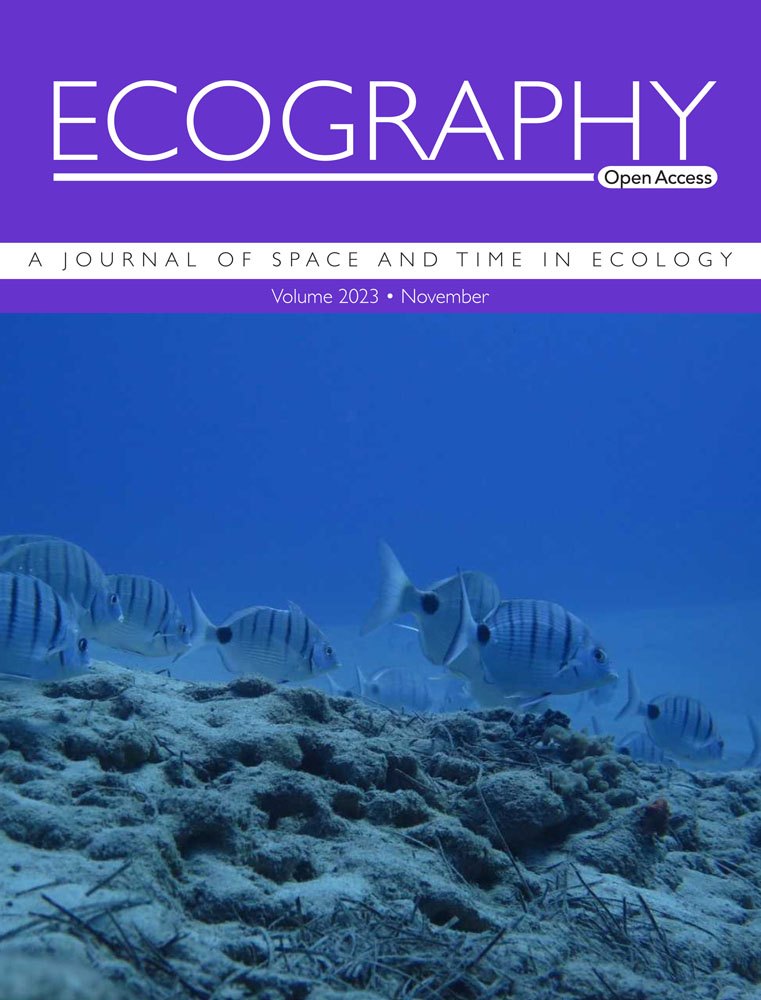Resource quantity and heterogeneity drive successional plant diversity in managed and unmanaged boreal forests
IF 5.4
1区 环境科学与生态学
Q1 BIODIVERSITY CONSERVATION
引用次数: 0
Abstract
The understory vegetation of boreal forests plays a crucial role in maintaining biodiversity by creating habitats, supplying food resources, and regulating microclimate and soil conditions. This essential layer is frequently affected by disturbances such as forest fires and clear-cutting, which significantly alter understory communities and the ecosystem resource availability and heterogeneity. This study aimed to understand how these disturbances influence the spatial and temporal dynamics of key ecosystem resources, and subsequently the patterns of understory diversity. We analyzed and compared understory vegetation diversity in a rotational management chronosequence and an unmanaged fire chronosequence of Scots pine Pinus sylvestris forests across northern Sweden. We assessed the relationship of above- and belowground resource availability and heterogeneity with alpha and beta diversity using generalized additive models and multivariate analyses. We found that belowground resource availability (especially inorganic nitrogen) and aboveground resource heterogeneity (especially variation in forest structural complexity) were most strongly positively correlated with alpha and beta diversity, varying across successional stages. In early stages (0–60 years), high availability of belowground resources and aboveground heterogeneity was associated with high alpha and beta diversity. In mid-stages (100–200 years), reduced belowground resource availability and aboveground heterogeneity was linked to lower diversity. In late stages (> 250 years, which only exists in the unmanaged fire chronosequence), increased aboveground heterogeneity associated with tree mortality was linked to a resurgence in alpha and beta diversity. These results highlight the necessity of maintaining a mosaic of stands with different disturbance regimes and successional stages, particularly early post-fire stands and late successional stands, which are currently much rarer on the landscape, to support biodiversity at the landscape level.资源数量和异质性驱动有管理和无管理的北方森林的演替植物多样性
寒带林下植被通过创造栖息地、提供食物资源、调节小气候和土壤条件,在维持生物多样性方面发挥着至关重要的作用。这一重要层经常受到森林火灾和砍伐等干扰的影响,这极大地改变了林下群落和生态系统资源的可用性和异质性。本研究旨在了解这些干扰如何影响关键生态系统资源的时空动态,进而影响林下植被多样性的格局。我们分析和比较了瑞典北部苏格兰松林的林下植被多样性,在轮换管理和未管理的火灾时间序列中。利用广义加性模型和多变量分析,评估了地表和地下资源可得性和异质性与α和β多样性的关系。研究发现,地下资源有效性(尤其是无机氮)和地上资源异质性(尤其是森林结构复杂性的变化)与α和β多样性的正相关最为强烈,且在演替阶段存在差异。在早期阶段(0-60年),地下资源的高可利用性和地上异质性与高α和β多样性相关。在中期(100-200年),地下资源可利用性和地上异质性的降低与多样性降低有关。在后期阶段(>;250年(仅存在于未管理的火灾时间序列中),与树木死亡率相关的地上异质性增加与α和β多样性的复苏有关。这些结果强调了维持具有不同干扰制度和演替阶段的林分马赛克的必要性,特别是目前在景观上非常罕见的早期火后林分和晚期演替林分,以支持景观层面的生物多样性。
本文章由计算机程序翻译,如有差异,请以英文原文为准。
求助全文
约1分钟内获得全文
求助全文
来源期刊

Ecography
环境科学-生态学
CiteScore
11.60
自引率
3.40%
发文量
122
审稿时长
8-16 weeks
期刊介绍:
ECOGRAPHY publishes exciting, novel, and important articles that significantly advance understanding of ecological or biodiversity patterns in space or time. Papers focusing on conservation or restoration are welcomed, provided they are anchored in ecological theory and convey a general message that goes beyond a single case study. We encourage papers that seek advancing the field through the development and testing of theory or methodology, or by proposing new tools for analysis or interpretation of ecological phenomena. Manuscripts are expected to address general principles in ecology, though they may do so using a specific model system if they adequately frame the problem relative to a generalized ecological question or problem.
Purely descriptive papers are considered only if breaking new ground and/or describing patterns seldom explored. Studies focused on a single species or single location are generally discouraged unless they make a significant contribution to advancing general theory or understanding of biodiversity patterns and processes. Manuscripts merely confirming or marginally extending results of previous work are unlikely to be considered in Ecography.
Papers are judged by virtue of their originality, appeal to general interest, and their contribution to new developments in studies of spatial and temporal ecological patterns. There are no biases with regard to taxon, biome, or biogeographical area.
 求助内容:
求助内容: 应助结果提醒方式:
应助结果提醒方式:


